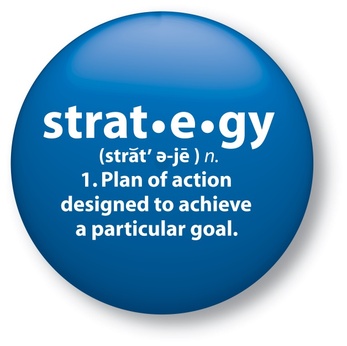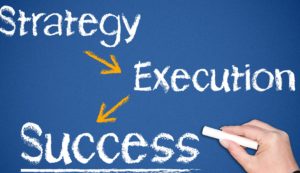Lonely at the Top: Redux

It does not have to be “lonely at the top.” The notion that chief executive officers must come from a species of super-independent, self-sufficient, emotionally rock-solid, wise, socially comfortable, and confidently decisive leaders is delusional. Nobody in the chief executive role that I have met qualifies in all areas. CEOs are human beings with both strengths and weaknesses. That they may possess qualities that set them uniquely apart to lead organizations can’t be argued. Why else would search committees and boards of directors go through the candidate evaluation process when hiring a new CEO? Skills, attitudes, personal qualities, good judgment, previous experience, education – all are considered in the screening and hiring process. Every organization wants to believe that they have chosen the best of all possible candidates to be their leader. But to think that they are somehow impervious to the foibles of being human? Well, that just does not align with reality.
 The unfortunate fact is that many CEOs end up feeling isolated and very alone. As I have previously written, there are many factors that contribute to isolation and which insulate the chief executive from his or her staff and board. (See my article entitled “Lonely at the Top.”) With no peers in the organization, the CEO often finds that there are very few, if any, reliable confidants with whom to share ideas, concerns and fears. Notwithstanding the fact that a “work spouse” may provide a sympathetic ear, both subordinates and supervisors (usually the board) are ill-advised sources for emotional, social, professional and psychological support. And not all CEOs have spouses who can provide that kind of support.
The unfortunate fact is that many CEOs end up feeling isolated and very alone. As I have previously written, there are many factors that contribute to isolation and which insulate the chief executive from his or her staff and board. (See my article entitled “Lonely at the Top.”) With no peers in the organization, the CEO often finds that there are very few, if any, reliable confidants with whom to share ideas, concerns and fears. Notwithstanding the fact that a “work spouse” may provide a sympathetic ear, both subordinates and supervisors (usually the board) are ill-advised sources for emotional, social, professional and psychological support. And not all CEOs have spouses who can provide that kind of support.
It doesn’t have to be that way. Drawing upon the experiences of people in religion, recovery and higher education, I would suggest that CEOs can benefit significantly in their professional and personal lives if they have at least one individual they can utilize as a mentor or guide. Many religious traditions suggest using a spiritual guide, that is, someone who is wise and accepting, with whom deep spiritual concerns can be shared, and to whom questions of faith can be addressed. Alcoholics Anonymous suggests that recovering alcoholics get a sponsor, usually someone with a sufficient number of years of sobriety, who can guide the person through the 12-Step program and provide encouragement and support. And it is very common for graduates of doctoral programs to reminisce fondly about the cherished hours of dialogue with their advisor and mentor, and the intense intellectual stimulation and growth that came from such wise guidance.
While one’s intelligence may have been part of the reason for getting the job and for being able to lead and accomplish great things, it is also true that many of the problems CEOs face are the products of their own thinking. As Albert Einstein observed, to believe that the thought processes which created a problem can be used to solve the problem is insanity. Everybody needs an external check against egoistic self-reliance.
A cherished colleague of mine who is a psychotherapist contends that healthy human beings need at least five true friends in their lives, not including a spouse or significant other. She defines such a friend as one who, if they had to watch the entire video of your life – revealing every thought, word and action – would not run screaming out of the room. Or, as St. Augustine said, “A friend is someone who knows everything about you and still accepts you.”
 I’d like to believe that the large majority of CEOs have a solid circle of such friends who can help them maintain sanity and balance in their personal and professional lives. I just don’t happen to know too many. And I certainly wasn’t one of those fortunate few, either. I wish I had been. My experience has shown me that CEOs have a great need for holistic support from others who care deeply for them and who can provide honest, trustworthy and confidential advice. But this requires a certain amount of vulnerability, something which doesn’t come naturally for many executive leaders. As one of my spiritual guides, Fr. Richard Rohr, recently wrote:
I’d like to believe that the large majority of CEOs have a solid circle of such friends who can help them maintain sanity and balance in their personal and professional lives. I just don’t happen to know too many. And I certainly wasn’t one of those fortunate few, either. I wish I had been. My experience has shown me that CEOs have a great need for holistic support from others who care deeply for them and who can provide honest, trustworthy and confidential advice. But this requires a certain amount of vulnerability, something which doesn’t come naturally for many executive leaders. As one of my spiritual guides, Fr. Richard Rohr, recently wrote:
Did you ever imagine that what we call “vulnerability” might just be the key to ongoing growth? In my experience, healthily vulnerable people use every occasion to expand, change, and grow. Yet it is a risky position to live undefended, in a kind of constant openness to the other—because it means others could sometimes actually wound us. Indeed, vulnera comes from the Latin for “to wound.” But only if we take this risk do we also allow the opposite possibility: the other might also gift us, free us, and even love us. (CAC.org, Daily Meditation, September 28, 2016)
 To address this need for growth and support through vulnerability, some CEOs hire an executive coach to provide objective, dispassionate advice and counsel. That’s fine at the professional level, but doesn’t usually address personal issues. Others utilize the services of a psychotherapist to manage emotional challenges. Still others use a spiritual guide with whom they can “confess.” I even know of one retired CEO who for years had his own private board of directors. This was a relatively small, diverse group of individuals who held him accountable in every aspect of life. Their pledge for total confidentiality only cost him several dinner meetings each year – a very small price to pay for the benefit he derived. He told me that he both looked forward to and dreaded those meetings. They made him better. They kept him whole. And they made him accountable.
To address this need for growth and support through vulnerability, some CEOs hire an executive coach to provide objective, dispassionate advice and counsel. That’s fine at the professional level, but doesn’t usually address personal issues. Others utilize the services of a psychotherapist to manage emotional challenges. Still others use a spiritual guide with whom they can “confess.” I even know of one retired CEO who for years had his own private board of directors. This was a relatively small, diverse group of individuals who held him accountable in every aspect of life. Their pledge for total confidentiality only cost him several dinner meetings each year – a very small price to pay for the benefit he derived. He told me that he both looked forward to and dreaded those meetings. They made him better. They kept him whole. And they made him accountable.
It doesn’t have to be lonely at the top. But the first step has to be taken by the CEO – first, to acknowledge his/her need for such counsel, but second, to actually put such a practice into effect. Boards can suggest. Consultants can encourage. Coaches can prompt. But CEOs must put their egos aside and create their own circles of support. Their very careers may well depend on it.
Your thoughts around the need for this kind of vulnerability are encouraged. If you would like to talk more about this with me in an absolutely confidential manner, just give me a call.


